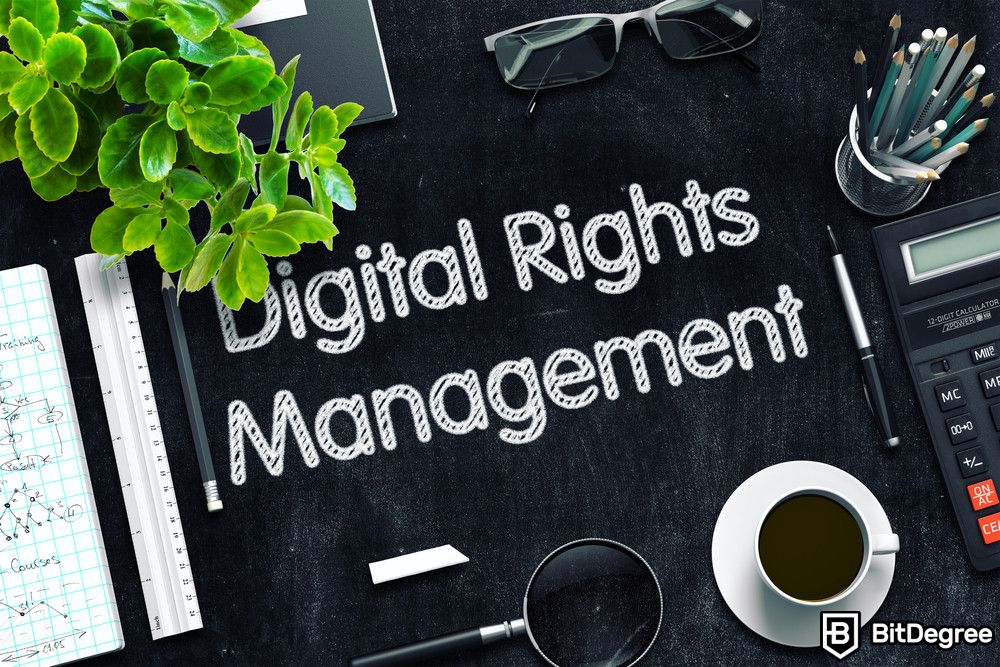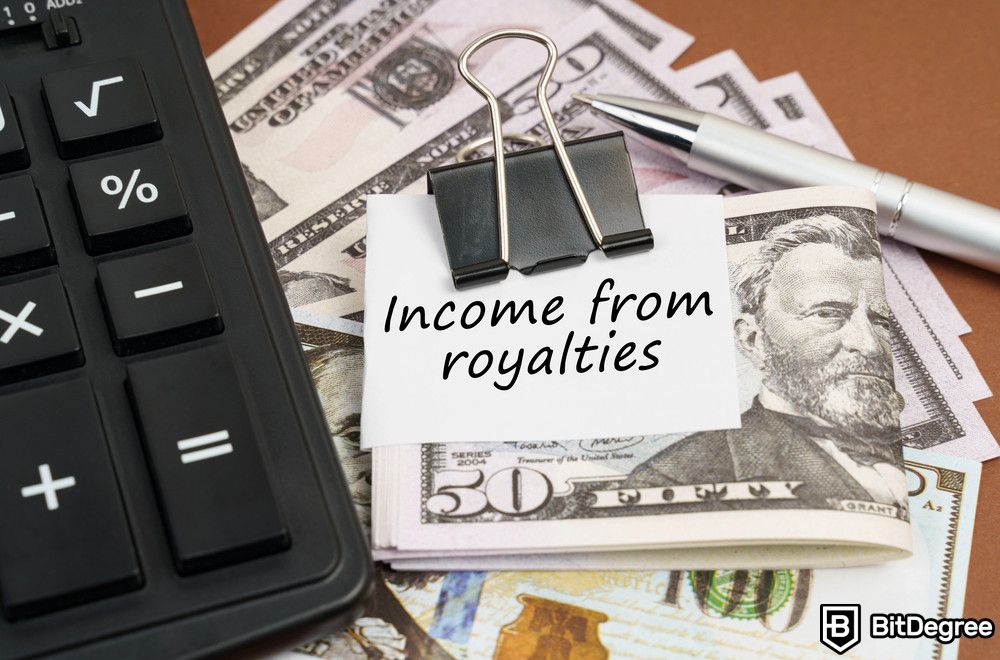Key Takeaways
- Blockchain technology has use cases in various sectors, including finance, supply chain management, healthcare, and intellectual property;
- Blockchain’s decentralized nature, security, and immutability are major keys to solving current industry challenges;
- Integrating blockchain technology is challenging due to its high initial costs, resistance to change, and the complexity of its adoption with existing systems.
Stop overpaying - start transferring money with Ogvio. Sign up, invite friends & grab Rewards now! 🎁
Blockchain technology has revolutionized digital finance, allowing instantaneous and cost-effective money transfers worldwide. The application of blockchain can transform industries, from finance to intellectual property, offering a transparent and secure way to manage transactions across various sectors.
Taking an example in the finance sector, crypto exchanges like Binance, Kraken, and Bybit enable seamless cryptocurrency trading and investing. Besides that, though, various blockchain projects in supply chain management, healthcare, and intellectual property demonstrate their broad impact on managing data, combating fraud, and securing digital rights.
You’ll learn how significantly blockchain technology impacts these industries, as well as what challenges this technology faces and how it overcomes them. So, let’s explore the transformative applications of blockchain technology!

Did you know?
Subscribe - We publish new crypto explainer videos every week!
What is Terra Luna? History & Crash Explained (ANIMATED)


Table of Contents
- 1. Application of Blockchain Technology in Finance
- 1.1. Cryptocurrencies and Beyond
- 1.2. Smart Contracts
- 1.3. Cross-Border Transactions
- 1.4. Challenges and Solutions
- 2. Application of Blockchain Technology in Supply Chain Management
- 2.1. Combating Counterfeits
- 2.2. Improving Transparency
- 2.3. Streamlining Logistics
- 2.4. Challenges and Solutions
- 3. Application of Blockchain Technology in Healthcare
- 3.1. Drug Traceability
- 3.2. Patient Data Management
- 3.3. Clinical Research and Trials
- 3.4. Challenges and Solutions
- 4. Application of Blockchain Technology in Intellectual Property
- 4.1. Securing Digital Rights
- 4.2. Efficient Intellectual Property Registration
- 4.3. Streamlining Royalties and Licensing
- 4.4. Challenges and Solutions
- 5. Conclusions
Application of Blockchain Technology in Finance
The application of blockchain technology in finance has transformed how transactions are conducted, offering enhanced transparency, efficiency, and security. This technology is set to redefine traditional financial systems and drive industry innovation.
Latest Deal Active Right Now:Many financial sectors implement blockchain technology to achieve various goals. Let’s discuss how this innovative technology affects the finance industry.
Cryptocurrencies and Beyond
Cryptocurrency is one of the ways blockchain technology is applied. So, let's talk about it first. What are cryptocurrencies?
Basically, cryptocurrencies are digital currencies that use cryptography for security and operate on blockchain technology. They represent a transformative application of blockchain technology, enabling peer-to-peer transactions without traditional intermediaries like banks.
The quickly spreading popularity of cryptocurrencies is one of the reasons why new technologies are being developed. Examples include decentralized applications (dApps) and smart contracts, which extend the utility of these digital assets into various financial services.
There are thousands of cryptocurrencies, but here are a few of the most popular ones:
- Bitcoin (BTC). Bitcoin is the first successful and most well-known cryptocurrency, which is often referred to as digital gold.
- Binance Coin (BNB). Binance Coin is used on the Binance exchange to cover and reduce trading fees and other utilities within the exchange ecosystem.
- Ethereum (ETH). Ethereum is a blockchain known for its smart contract functionality, which allows the creation of decentralized applications (dApps). ETH is its native asset.
- Tether (USDT). Tether is a stablecoin pegged to the US dollar or other fiat currencies, offering stability in the volatile crypto market.

Not sure where to get these assets? Well, you have crypto exchanges for that. Binance, Kraken, and Bybit are among the most reputable crypto exchanges. They provide platforms for purchasing, selling, and trading various cryptocurrencies. These exchanges are crucial blockchain projects that facilitate secure and efficient crypto trading.
Binance is renowned for its wide range of digital assets and low fees. Kraken offers robust security features and a variety of fiat-to-crypto pairs. Bybit is known for its user-friendly interface and high liquidity.
Beyond trading, blockchain technology’s potential extends beyond cryptocurrency exchanges. Decentralized finance (DeFi) is a rapidly growing sector that showcases the transformative power of blockchain technology in the financial realm.
DeFi platforms let users lend and borrow funds directly from one another[1], making it possible to earn interest and secure loans without traditional banks. Staking is another popular DeFi activity that involves locking up cryptocurrencies to support blockchain networks and earning rewards.
Smart Contracts
A smart contract is another revolutionary application of blockchain that enables automated and trustless transactions. It is a self-executing contract with the agreed terms written directly into the code[2]. Smart contracts ensure transparency, security, and immutability. Therefore, they can eliminate the risk of fraud or data manipulation.
The following are several blockchain-based financial platforms or services utilizing smart contracts:
- Decentralized exchanges (DEXs): Smart contracts are heavily used in DEXs to facilitate peer-to-peer trading without middlemen. They hold the funds and execute trades based on agreed-upon conditions.
- Automated insurance products: Insurance platforms using blockchain technology, such as Nexus Mutual and Estherics, implement smart contracts to automate claims processing and payouts. These smart contracts provide efficient and transparent insurance services.
- Security Token Offerings (STOs): STOs use smart contracts to tokenize traditional assets like real estate and company shares. The smart contracts cover trading, security token management, and issuance.
- Derivatives trading: In the crypto world, smart contracts enable the creation of derivative products like options and futures contracts. This could increase efficiency and transparency in derivatives markets.
- Fractional ownership: Smart contracts allow for the fractional ownership of expensive artwork or real estate, making investing in these assets more accessible and transparent.
As blockchain projects expand, smart contracts will play a significant role in transforming the financial landscape.
Cross-Border Transactions
Cross-border transactions refer to financial transactions conducted between parties located in different countries. Some common examples include bank transfers and credit card payments. However, these transactions often encounter challenges like high fees, lengthy processing times, and currency conversion issues.

Fortunately, with the application of blockchain technology, cross-border transactions can significantly improve. This technology brings several advantages to cross-border transactions, such as:
- Faster settlement times: Transactions can be completed in seconds or minutes, compared to days with traditional methods.
- Greater Transparency: All participants in a transaction can see a real-time record of the transaction.
- Lower costs: Blockchain technology can greatly reduce transaction fees by eliminating the need for intermediaries like banks.
- Increased security: Since blockchain is a distributed ledger technology, it can minimize fraud risks and cyberattacks.
Examples of blockchain projects facilitating cross-border transactions include Ripple and Stellar. Ripple’s blockchain-based payment protocol, RippleNet, enables fast and low-cost cross-border transactions for financial institutions. Using its native cryptocurrency, XRP, Ripple facilitates seamless cross-border payments, offering an alternative to traditional banking networks.
Stellar is one of the blockchain applications focused on providing cross-border transaction and payment services. Its decentralized network allows for the exchange and transfer of various assets, including fiat currencies and digital tokens.

- Secure and reliable
- Accepts fiat currencies
- Lots of trading options
- Reputable exchange
- Accepts fiat currencies
- Offers various trading options

- Huge trading variety
- Regulation-compliant around the globe
- Fair trading fees
- Beginner-friendly
- A wide array of features
- Vast number of different crypto coins & tokens

- Beginner-friendly
- Secure
- Decent trading and withdrawal fees
- Crypto.com Visa Card
- Automated tools & bots
- Ecosystem synergy with CRO
Challenges and Solutions
The application of blockchain technology in the finance sector presents significant challenges. There are several hurdles to solve, starting with regulatory uncertainty. Governments and regulators around the world are still figuring out how to handle blockchain, which can make financial institutions nervous about diving in headfirst.
Scalability is another challenge. Blockchain networks often struggle with handling a high number of transactions quickly and efficiently, which is crucial for financial services.
Then, there’s the issue of blockchain technology integration. Financial systems are like well-oiled machines, but they’re also pretty conventional. Integrating cutting-edge blockchain technology with these traditional systems can be complex, costly, and time-consuming.

So, what is a potential solution to these challenges? For starters, developing clear and comprehensive regulatory guidelines can help. This means regulators must be on the same page and create rules addressing blockchain’s unique characteristics.
Second, improving blockchain’s scalability with innovations like sharding and Layer-2 solutions can also make a big difference. Lastly, fostering collaboration between traditional financial institutions and blockchain startups can help ease the integration process.
Application of Blockchain Technology in Supply Chain Management
The application of blockchain technology in supply chain management changes how goods are tracked and verified from production to delivery. It provides transparency and security, ensuring that each step in the supply chain is recorded and tamper-proof.
Blockchain use cases in supply chain management are diverse, ranging from verifying the authenticity of products to simplifying logistics. Therefore, it can be particularly beneficial to industries like pharmaceuticals, luxury goods, and food, where originality and traceability are essential. So, let’s discuss several blockchain uses.

Did you know?
Subscribe - We publish new crypto explainer videos every week!
What is a MetaMask Wallet? (And How to Use it - Animated)


Combating Counterfeits
Counterfeiting is a significant issue in supply chain industries, negatively affecting products from luxury goods to pharmaceuticals. It undermines brand integrity, endangers consumer safety, and results in considerable economic losses. Traditional methods of combating counterfeiting often fall short due to the complexity of global supply chains.
The application of blockchain technology provides a robust solution to fight counterfeiting. This technology creates an immutable database for tracking products from their origin to the final consumer. Therefore, it can ensure the authenticity and source of goods. Each transaction and movement is recorded transparently.

Now, you might wonder whether there is any blockchain-based supply chain company that can combat counterfeiting. There are several of them, such as:
- Provenance: It uses blockchain technology to allow consumers to verify a product's originality by scanning a code or tag linked to the blockchain. This allows them to see the product’s history and confirm its authenticity.
- VeChainThor: This is one of the blockchain applications that provides comprehensive anti-counterfeiting solutions. It embeds unique product identifiers to ensure each item can be traced and verified throughout the supply chain.
- TrustedLab: The platform uses blockchain technology to enhance supply chain transparency and combat counterfeiting. The company provides secure and immutable product tracking information, ensuring the integrity and originality of goods across various industries.
These are just a few examples of blockchain companies actively combating counterfeiting. The technology’s potential to revolutionize product traceability and authenticity is immense, promising a future where consumers can trust the products they buy.
Improving Transparency
Transparency in supply chain management is crucial for ensuring all parties can access accurate and timely information about the goods’ movement and status. It also helps build trust among stakeholders by providing a clear view of the entire supply chain process.
Blockchain uses or applications improve overall supply chain transparency. Blockchain technology allows for real-time and transparent tracking, making it easier to identify where a product is at any given time and under what conditions it was handled.
For instance, blockchain technology can track a product from a farm to a consumer’s house. This means the technology provides consumers with verifiable information about the product’s journey while ensuring its quality standards and safety.
Another important application of blockchain technology in enhancing transparency is its ability to provide immutable transaction records. This feature is vital for maintaining data integrity and establishing tamper-proof information.

Now, let’s discuss several supply chain platforms or companies focusing on transparency:
- IBM Food Trust: This blockchain example focuses on improving food safety and traceability. The company provides a transparent record of the entire supply chain.
- Circulor: It uses blockchain technology to enhance the transparency of the supply chain. They track materials' journeys from their origin to the finished product.
- Te-Food: The company adopts blockchain technology to track the journeys of food products. The technology provides transparent information, helping to improve food safety and reduce fraud.
- OriginTrail: The company’s blockchain use cases include creating a decentralized knowledge graph for supply chains, which provides transparent and secure data sharing among stakeholders.
These examples highlight how blockchain technology applications can transform supply chain management by improving transparency, building trust, and maintaining product integrity throughout the journey.
Streamlining Logistics
Logistics is a crucial component of supply chain management. It involves the supply chain's physical movement, storage, and coordination. Efficient logistics is essential for meeting customer demands, reducing costs, and ensuring on-time product delivery.
The application of blockchain technology in logistics can reduce paperwork and delays. Blockchain uses a transparent and immutable record of all movements and transactions, which simplifies goods tracking and reduces the need for manual documentation. This leads to faster processing times and lower administrative costs.

Nowadays, many supply chain management companies have implemented blockchain technology. Several notable companies include:
- FedEx: This company is exploring blockchain use cases to improve its logistics, enhancing transparency and traceability. It aims to provide customers with real-time updates on their shipments and streamline complex processes in cross-border logistics.
- Kuehne + Nagel: It utilizes blockchain technology to enhance logistics operations. The company aims to improve efficiency and transparency in its supply chain, enabling real-time shipment tracking and reducing administrative costs.
- UPS: The company has joined the Blockchain in Transport Alliance (BiTA) to explore blockchain applications. UPS adopts blockchain technology to improve shipment tracking and ensure the originality of shipping records, which helps them reduce fraud and improve efficiency.
- DHL: It adopts blockchain technology to streamline its logistics processes, particularly in the pharmaceutical industry. DHL ensures that product movements are handled correctly and reach their destination without delays and tampering.
These examples demonstrate the power of blockchain technology to streamline logistics, reduce inefficiencies, and improve the reliability of supply chains.

- Secure and reliable
- Accepts fiat currencies
- Lots of trading options
- Reputable exchange
- Accepts fiat currencies
- Offers various trading options

- Huge trading variety
- Regulation-compliant around the globe
- Fair trading fees
- Beginner-friendly
- A wide array of features
- Vast number of different crypto coins & tokens

- Beginner-friendly
- Secure
- Decent trading and withdrawal fees
- Crypto.com Visa Card
- Automated tools & bots
- Ecosystem synergy with CRO
Challenges and Solutions
Integrating blockchain technology in supply chains presents several challenges. These include resistance to change, the complexity of integrating blockchain technology with legacy systems, and the high initial costs associated with implementation. So, how can blockchain technology help solve the challenges?
Potential solutions to these issues include integration strategies that let companies adopt blockchain technology step-by-step, thus reducing disruption to existing operations. Investing in employee training and collaborating with blockchain experts can also help ease the transition. Additionally, industry-wide collaborations can promote consistency and teamwork.
Scalability is another significant issue when adopting blockchain technology in supply chains. As transaction volumes increase, it can be more challenging to maintain the speed and efficiency of blockchain networks. This is especially problematic for supply chains, which require high throughput and rapid processing times to function effectively.
To address scalability issues, companies can explore off-chain transactions, sidechains, and sharding. Off-chain transactions reduce the load on the main blockchain by handling some processes externally. Sidechains allow for parallel transaction processing while sharding divides the blockchain into smaller, more manageable segments.
Application of Blockchain Technology in Healthcare
In the healthcare industry, blockchain technology offers efficient and secure solutions for managing sensitive medical data and transactions. The application of blockchain technology reduces fraud in the medical field and enhances the efficiency of healthcare processes, ultimately leading to streamlined operations and better medical outcomes.
So, what are the use cases of blockchain technology in healthcare? Let's explore how blockchain applications transform the healthcare sector.
Drug Traceability
The first application of blockchain in healthcare is drug traceability. This system tracks medications throughout the supply chain, from manufacturing to when they reach the patient. With blockchain technology, healthcare providers can give each drug package a unique identifier, allowing everyone involved to follow its movement.
Moreover, drug traceability ensures that medications are genuine, safe, and have not been tampered with during distribution. Effective drug traceability is crucial for preventing counterfeit drugs from entering the market, ensuring regulatory compliance, and maintaining patient safety.

There are several healthcare platforms implementing blockchain technology that offer drug traceability:
- Tiga Healthcare Technologies: It provides end-to-end traceability of pharmaceutical products. This company ensures that every step is recorded and verified to prevent counterfeit medicines from reaching patients and ensure compliance with regulatory standards.
- MediLedger: This is a blockchain example focused on enhancing the pharmaceutical supply chain. This blockchain-based network allows stakeholders to share and verify data. It also tracks medications from production to delivery to mitigate counterfeiting.
- Chronicled: It implements blockchain technology applications to create a secure and transparent pharmaceutical supply chain. It facilitates communication and data sharing among manufacturers, distributors, and pharmacies.
Drug traceability is one of the blockchain technology applications that play a crucial role in helping combat counterfeiting and protect patient safety.
Patient Data Management
Traditional patient data management involves storing and accessing patient records in centralized databases managed by hospitals, clinics, and healthcare providers. This method often leads to data silos, making it challenging to share information between different entities. Centralized databases are also more vulnerable to data breaches and manipulation.
Therefore, the application of blockchain technology in patient data management is crucial. It provides a decentralized ledger for storing and sharing patient information, ensuring patient data is accessible only to authorized parties. Blockchain technology also enables seamless data sharing between healthcare providers.

There are several patient data management platforms that utilize blockchain technology, such as:
- MedRec: MedRec is a blockchain-based system for managing electronic health records (EHRs). It allows patients to control their medical records and grant access to healthcare providers as needed.
- Medvault: It provides a decentralized platform for storing and managing patient records. With blockchain technology, Medvault ensures that patient data is tamper-proof and accessible only to authorized users.
- Medicalchain: This blockchain example enables the secure storage and sharing of EHRs. It allows patients to easily provide their records to healthcare professionals.
- Hibiscus Health: It adopts blockchain technology to create a patient-centric platform for managing health data, ensuring patient records are easily accessible and secure.
Integrating blockchain technology in patient data management greatly enhances patient data privacy, accessibility, and integrity. Consequently, it can improve patient care and coordination among healthcare providers.
Clinical Research and Trials
Clinical research and trials are essential to healthcare, as they aim to evaluate the safety and success of new treatments, drugs, and medical devices. These studies involve well-thought methodologies and data collection to provide reliable results. However, traditional processes can be lengthy, prone to data manipulation, and lack transparency.
The application of blockchain in clinical research and trials can significantly enhance transparency and trust. Blockchain’s immutable ledger ensures that all data collected during trials is tamper-proof. This technology also facilitates traceable recording of all research activities, from patient consent to data analysis.

There are several case studies illustrating blockchain use cases in clinical research and trials:
- Triall: Triall aims to streamline and secure clinical trial processes. It provides clinical trial data transparency, enhancing trust among stakeholders like researchers and participants.
- Mayo Clinic: Mayo Clinic has explored the application of blockchain technology to improve clinical trials. It can help ensure that all trial data is accurately recorded and verified.
- Medable: It can provide a secure and transparent system for managing trial data, from patient recruitment to data collection and analysis. Medable aims to accelerate clinical trials while maintaining high security and data integrity standards.
These blockchain projects are great innovations that can help create a secure, transparent, and tamper-proof system for managing clinical trial data.

- Secure and reliable
- Accepts fiat currencies
- Lots of trading options
- Reputable exchange
- Accepts fiat currencies
- Offers various trading options

- Huge trading variety
- Regulation-compliant around the globe
- Fair trading fees
- Beginner-friendly
- A wide array of features
- Vast number of different crypto coins & tokens

- Beginner-friendly
- Secure
- Decent trading and withdrawal fees
- Crypto.com Visa Card
- Automated tools & bots
- Ecosystem synergy with CRO
Challenges and Solutions
While blockchain technology has many use cases in healthcare, it also presents several notable challenges. Data privacy has become a significant concern in the healthcare sector. Patient data is highly sensitive, and traditional data management systems are often vulnerable to unauthorized access and breaches.
The application of blockchain technology addresses this privacy concern by providing a secure and immutable ledger for storing patient data. Blockchain’s decentralized nature ensures that data is not stored in a single location but distributed across a network of nodes, making unauthorized access and data breaches nearly impossible.
Data exchange in existing healthcare systems is another challenge. Healthcare providers often use diverse systems that struggle to communicate with each other. Consequently, it can be difficult to share patient information across different platforms.
Fortunately, blockchain technology offers a solution to this issue by providing a standardized framework for data exchange. It can create a transparent system where patient records are safely shared across different healthcare systems and providers. Additionally, smart contracts on blockchain platforms can automate data-sharing processes.
Application of Blockchain Technology in Intellectual Property
In intellectual property, blockchain technology offers an innovative way to manage and protect digital rights. By implementing the application of blockchain technology, creators and investors can safeguard their digital work against unauthorized use and rest assured that it is securely documented.
As blockchain technology applications evolve, their use in intellectual property has become increasingly important. From securing digital rights to streamlining royalty payments, blockchain technology is changing the intellectual property landscape. So, let’s discover several notable use cases.
Securing Digital Rights
Digital rights management (DRM) is crucial in protecting the ownership and authenticity of digital content, such as art, music, and written works. It ensures that creators and owners have control over their intellectual property and receive proper compensation for their work. Without effective DRM, piracy and unauthorized use can negatively affect creators’ innovation.

Blockchain technology offers a solution for securing digital rights by recording digital content on an immutable ledger. Therefore, blockchain technology ensures that ownership and originality can be proven. Additionally, blockchain’s smart contracts can automate royalty payments and licensing agreements, ensuring creators are fairly compensated in real time.
There are several practical blockchain projects regarding digital rights management. They are:
- Verisart: It uses blockchain technology to verify artworks and collectibles. Creators can manage certificates of authenticity for their artwork, with the option to keep them private or public. Moreover, businesses can integrate Verisart into Shopify to automatically certify creations or products sold through their online store.
- Blockchain-Based Digital Rights Management: This blockchain example offers a new approach to managing ownership and access controls for digital content. BDRM utilizes the blockchain’s decentralized nature, so ownership and access rights are recorded on a shared ledger accessible to everyone on the network.
The integration of blockchain technology in digital rights management brings many innovations and benefits to digital creators. It also provides a more secure and efficient system for them.
Efficient Intellectual Property Registration
Intellectual property registration refers to recording legal ownership of creations, trademarks, and inventions. It provides legal protection, ensuring that the owner’s rights are recognized. Proper intellectual property registration helps prevent unauthorized use, boosting creators’ and investors’ confidence in sharing and commercializing their work.

Registering intellectual property offers various advantages, strengthening creators’ position in the marketplace and potentially increasing their profits. Here are several key benefits:
- Stronger legal protection: Intellectual property registration grants creators exclusive rights to their intellectual property. Therefore, creators can easily take legal action against competitors who copy their work without authorization.
- Enhanced market value: Registered intellectual property becomes a valuable asset for business owners. It can increase brand recognition, attract investors, and raise the company’s value in mergers.
- Monetization opportunities: Intellectual property registration opens doors to generating income from intellectual property. Creators can license their trademarks, patents, or copyrights to other businesses.
The application of blockchain makes intellectual property registration more efficient and seamless by providing a decentralized database for recording ownership and registration details. Smart contracts can also streamline the registration process, automating and speeding up administrative tasks.
Streamlining Royalties and Licensing
Royalties are payments made to intellectual property owners for the use of their works, typically calculated as a percentage of revenue or a fixed fee. On the other hand, licensing involves permitting others to use the intellectual property under agreed terms, which may include specific uses, duration, and geographic scope.
The traditional system for managing royalties and licensing can be complex and prone to inefficiencies. It often involves multiple intermediaries, manual record-keeping, and time-consuming audits. These can lead to payment delays, disagreements over intellectual property use, and increased administrative costs.
Fortunately, blockchain technology offers a solution for simplifying intellectual property licensing and automating royalty payments. By adopting blockchain technology, intellectual property owners can create transparent and tamper-proof records of licensing agreements.

Additionally, smart contracts help automate the execution of these agreements. For instance, when a licensed product generates revenue, a smart contract can automatically calculate and distribute royalties to the intellectual property owner based on the agreed terms.
By integrating blockchain technology into the intellectual property ecosystem, creators and investors can benefit from faster royalty payments, streamlined licensing processes, and reduced administrative costs.

- Secure and reliable
- Accepts fiat currencies
- Lots of trading options
- Reputable exchange
- Accepts fiat currencies
- Offers various trading options

- Huge trading variety
- Regulation-compliant around the globe
- Fair trading fees
- Beginner-friendly
- A wide array of features
- Vast number of different crypto coins & tokens

- Beginner-friendly
- Secure
- Decent trading and withdrawal fees
- Crypto.com Visa Card
- Automated tools & bots
- Ecosystem synergy with CRO
Challenges and Solutions
Legal and technical obstacles in intellectual property include jurisdictional differences and the complexity of managing intellectual property rights across various platforms. Technically, integrating intellectual systems with blockchain technology requires overcoming data exchange issues and ensuring robust security measures.
Blockchain technology helps solve these issues by offering a transparent database transcending borders, providing a single source of truth for intellectual property rights. Additionally, blockchain’s immutability ensures security and authenticity.
Another concern about blockchain technology's adoption in intellectual property revolves around public and industry acceptance. Skepticism about blockchain’s reliability and integration complexity can delay widespread adoption.
Therefore, companies in the intellectual property sector can conduct educational campaigns to raise awareness about the benefits of blockchain applications, develop user-friendly interfaces for intellectual property platforms, and promote successful blockchain use cases to build trust.
Conclusions
The application of blockchain can bring positive transformations in various industries, such as finance, supply chain management, healthcare, and intellectual property.
In finance, for example, many companies have adopted blockchain technology to simplify cross-border payments and trade cryptocurrencies. Binance, Kraken, and Bybit are leading crypto exchanges that adopt this technology. They allow people to securely sell, buy, and trade cryptocurrencies or other digital assets.
Overall, blockchain technology applications can potentially solve various challenges across various industries. Transparency and security are two of the most common challenges, no matter which industry we’re talking about.
Luckily, with blockchain technology, companies can safely store their data on blockchains, and all authorized participants involved in the blockchain networks can see the data histories.
The content published on this website is not aimed to give any kind of financial, investment, trading, or any other form of advice. BitDegree.org does not endorse or suggest you to buy, sell or hold any kind of cryptocurrency. Before making financial investment decisions, do consult your financial advisor.
Scientific References
1. D. Zetzsche, D. Arner, R. Buckley: ’Decentralized Finance (DeFi)’;
2. Z. Zheng, S. Xie, H. Dai, W. Chen, et al.: ’An overview on smart contracts: Challenges, advances and platforms’.









